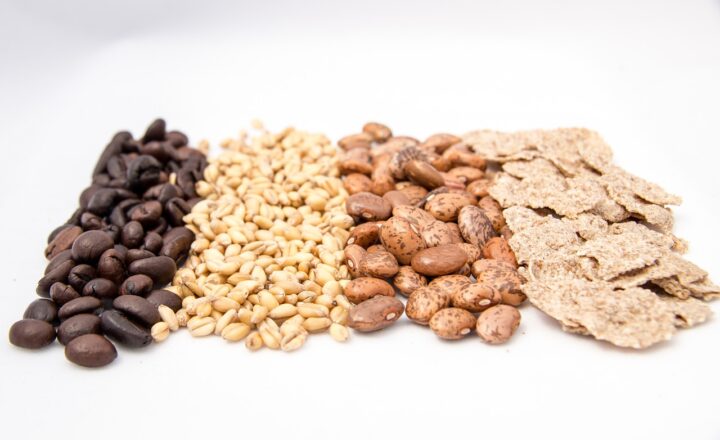Understanding Food Labels: How to Make Healthier Choices
November 12, 2024

In the quest for healthier living, understanding food labels can be a powerful tool. Every day, we are faced with countless food products, each boasting its own set of nutritional claims and ingredients. However, many consumers feel overwhelmed by the information displayed on packaging. By learning how to read and interpret food labels, you can make informed dietary choices that support your health and well-being.
1. The Anatomy of a Food Label
Food labels are designed to provide information about the nutritional value of the product, helping consumers make healthier choices. Here’s a breakdown of the key components that you’ll find on most food labels:
- Serving Size: This indicates the recommended portion of the food. Understanding serving sizes is crucial because many people underestimate how much they typically consume. Make sure you compare the serving size to the amount you actually eat.
- Calories: Displays the total number of calories per serving. This helps gauge how much energy you are consuming and can assist in weight management goals.
- Nutritional Facts: This section details the amount of various nutrients per serving, including fats, carbohydrates, and proteins. Look for foods high in fiber, vitamins, and minerals and low in saturated fats, trans fats, added sugars, and sodium.
- Ingredients List: Ingredients are listed in order of quantity. The first ingredients listed are the most predominant in the food product. Aim for products with whole food ingredients, and try to avoid those with excessive artificial additives and preservatives.
- Nutritional Claims: These can be found on the front panel and might say things like “low fat,” “high fiber,” or “sugar-free.” It’s essential to understand what these terms mean to evaluate if they align with your dietary goals.
By knowing what each section of a food label represents, you can better assess whether a product fits your nutritional needs.
2. Ingredients Matter: Decoding the Ingredients List
The ingredients list can be a goldmine of information about the quality of a product. Here’s how to interpret it effectively:
- Spotting Whole Ingredients: Look for whole ingredients rather than chemical names or additives. Ingredients such as “whole grain oats” or “fresh vegetables” indicate a minimally processed product.
- Understanding Additives: Many processed foods contain additives and preservatives. Common terms include “MSG,” “high fructose corn syrup,” and artificial colors. If you can’t pronounce it, think twice about whether it should go into your body.
- Identifying Allergens: The ingredients list also highlights common allergens such as nuts, gluten, and dairy. If you have allergies or intolerances, always check this list before purchasing a product.
In essence, the ingredients list can reveal the true nature of the food you’re consuming, allowing you to make safer and more nutritious choices.
3. Understanding Nutritional Claims
Manufacturers frequently use terms that can be misleading. Here’s how to decipher common claims:
- “Organic” vs. “Natural”: While “organic” foods should meet specific government standards and are free from synthetic pesticides and fertilizers, “natural” foods aren’t regulated. Always check other labels if environmental impact is a factor for you.
- “Low Fat”: Low-fat products often compensate for the lack of fat with added sugars. Check the ingredients and sugar content to ensure you’re not trading one unhealthy ingredient for another.
- “Whole Grain”: Not all products labeled as whole grain actually contain significant amounts of whole grains. Look for “100% whole grain” or “whole grain” as the first ingredient to ensure you’re getting whole grains in your diet.
Claims can be helpful, but they should not be a substitute for reading the ingredients and nutritional facts.
4. Practical Tips for Making Healthier Choices
Here are a few strategies to help you make healthier choices when grocery shopping:
- Shop the Perimeter: The outer edges of grocery stores typically feature fresh fruits, vegetables, meats, and dairy—whole foods that are less processed. Spend more time selecting items from these areas.
- Limit Processed Foods: Try to minimize consumption of highly processed foods. These often contain artificial ingredients, sugars, and unhealthy fats. A good rule of thumb is to choose foods with fewer than five ingredients when possible.
- Plan Ahead: Prepare a grocery list based on your meals for the week. This helps prevent impulse buys and encourages you to stick to healthy choices.
- Read Multiple Labels: Don’t just rely on one brand. Compare similar products’ labels. You may find healthier alternatives by simply reading the labels carefully.
Cognitive strategies coupled with thoughtful label reading can turn your grocery run into a route for healthier eating.
5. The Role of Food Labels in Weight Management
For those managing their weight, food labels can support your goals. Here’s how:
- Caloric Awareness: By understanding the calorie content of products, you can control your energy balance and maintain or lose weight effectively. Choose lower-calorie options when possible if you’re trying to shed pounds.
- Portion Control: Knowing the serving sizes can keep portion sizes in check. Be mindful of how many servings you consume, especially for higher-calorie or processed foods.
- Nutrient Density: Focus on nutrient-dense foods that provide more vitamins and minerals for fewer calories. These foods will keep you satisfied without excessive calories, helping in weight management.
Utilizing food labels effectively can undoubtedly guide your decisions and support your weight management journey.
Conclusion
Understanding food labels is essential in today’s health-conscious world. By mastering the art of reading labels, you empower yourself to make better dietary choices, enhance your overall health, and navigate grocery stores with confidence. Remember, healthier choices often lie just beneath the surface of food packaging. With this guide, you are now equipped to decode food labels and make more informed decisions about the foods you consume.
So next time you’re shopping, take a moment to read the labels. Your body will thank you for it!







